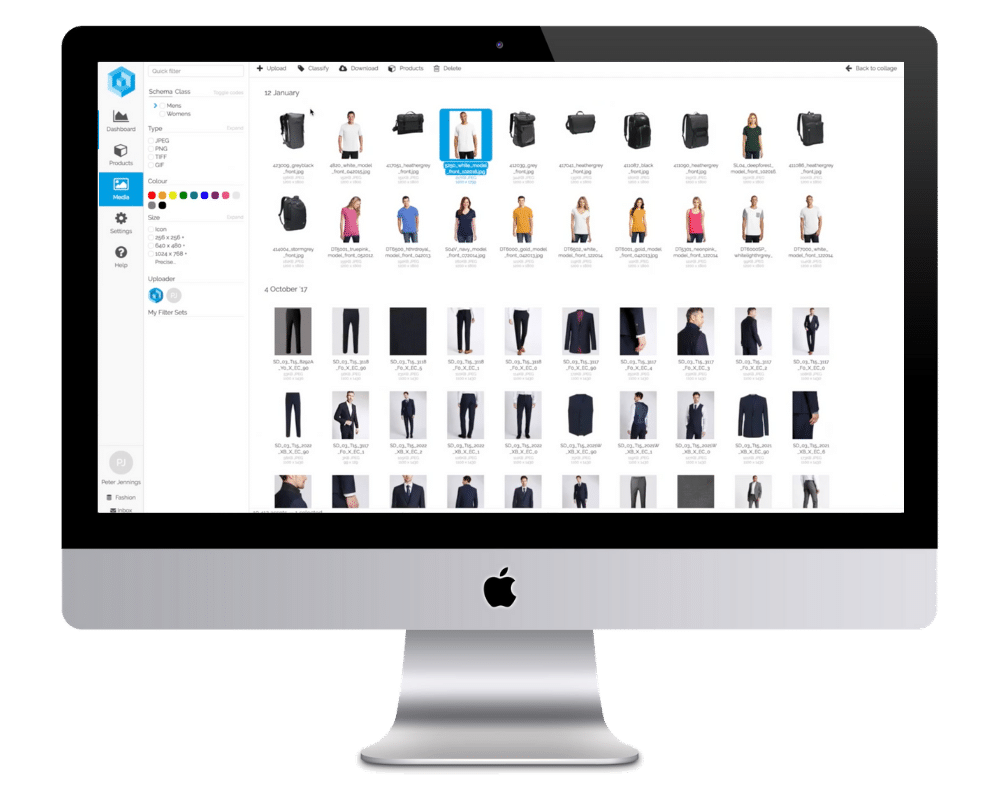Key Takeaways:
-
The Salesforce Informatica acquisition is designed to bolster Salesforce’s AI and data integration capabilities—but it could leave mid-sized businesses behind.
-
Informatica’s tools are likely to become more tightly embedded within Salesforce’s broader ecosystem, with potential pricing shifts and support centralization.

-
For companies seeking agile, independent, and tailored PIM solutions, Pimberly offers a scalable and user-friendly alternative.
What Is the Salesforce Informatica Acquisition?
In May 2025, Salesforce acquired Informatica for $8 billion in one of the biggest enterprise tech deals of the year. As TechCrunch reports, the move allows Salesforce to pull Informatica’s data integration, quality, and governance tools into its Customer 360 and Einstein AI stack—building a one-stop platform for enterprise data orchestration.
Informatica, which has served Fortune 500 companies for decades, powers data pipelines and compliance frameworks across industries. But its large-enterprise orientation and licensing model have often posed challenges for SMBs and mid-market teams looking for flexibility.
With this acquisition, Salesforce is expected to bake Informatica’s capabilities into its existing ecosystem. Consequently, it will improve performance for large clients but possibly narrowing support, customization, and cost-efficiency for others.
Use Cases
Salesforce aims to use Informatica’s tech to:
-
Seamlessly ingest and clean data from multiple sources
-
Feed reliable data into Einstein AI for enhanced personalization

-
Assist enterprises in meeting data governance regulations
-
Create more automated, AI-ready data environments
While that sounds like a win for Salesforce’s largest customers, smaller or more agile businesses may find themselves increasingly locked into an ecosystem with rising costs and less room for customization.
Why It Matters for Retailers and Manufacturers
Challenge #1: Growing Complexity, Shrinking Flexibility
Enterprise software consolidation often means better feature integration. However, this may come at the expense of customer-specific needs. Companies that relied on Informatica’s standalone flexibility may now face more standardized support, broader licensing bundles, and less control over individual components.
What happens when:
-
Support queues prioritize Salesforce’s top-tier enterprise clients?
-
Pricing structures are folded into broader, less transparent Salesforce plans?
-
Custom connectors or workflows are deprioritized in favor of Salesforce-native integrations?

For eCommerce brands and manufacturers who need to act fast and serve multiple sales channels, such situations could create operational bottlenecks.
Solution: A Tailored, Independent PIM Approach
This is where an independent PIM platform like Pimberly comes in. Instead of being tied to a sprawling ecosystem, Pimberly is designed specifically to support the product data needs of modern retailers, manufacturers, and distributors. You get:
-
Dedicated, hands-on support
-
A user-friendly interface with customizable workflows
-
Rapid implementation and scalability for growing catalogs
With Pimberly, you’re not just another seat on a Salesforce license. You’re a valued partner with tools designed around your business, not the other way around.
The Salesforce Stack Is Evolving—But Is It Right for You?
Key Feature #1: Deep Ecosystem Integration
CNBC notes that Salesforce plans to integrate Informatica’s data lineage and governance tools directly into its Marketing, Commerce, and Service Clouds. This creates a more unified system. On the other hand, it’s also a closed one.
That could mean:
-
Fewer integration paths with third-party systems
-
Less pricing flexibility as tools become bundled
-
An expectation to “go all in” on the Salesforce suite—even if only one part of it fits your business
Use Case Example: When Consolidation Isn’t a Fit
Imagine a UK-based electronics distributor using Informatica to pull product data from SAP, enrich it, and push it to Amazon, Shopify, and printed catalogs via PIM workflows.
Now, under Salesforce ownership:
-
The distributor may be encouraged (or required) to license Salesforce Commerce Cloud to fully use the new features.
-
Pricing models may shift to consumption-based or bundled tiers.

-
Support may be redirected toward Salesforce-focused roadmaps—at the expense of standalone users.
If you’re not ready to overhaul your tech stack just to keep using the tools you’ve relied on, this acquisition might feel more like a constraint than an opportunity.
Salesforce/Informatica Acquisition and PIM: Why Pimberly Is the Right Fit
The value of clean, centralized product data has never been higher. However, as tools like Informatica become subsumed into larger ecosystems, their ability to serve independent, product-focused teams diminishes.
Pimberly offers a future-proof path forward:
-
It integrates with Salesforce, Shopify, Adobe Commerce, and more—without locking you in.
-
It lets you manage all your product data, assets, and variants in one platform.
-
And it puts you in the driver’s seat with customizable workflows, team permissions, and real-time syndication tools.
Whether you’re replatforming from Informatica or simply want more flexibility, Pimberly helps you avoid tech bloat. In addition, you keep your product experience sharp, consistent, and scalable.
FAQs
Q: Will existing Informatica customers need to migrate their setup post-acquisition?
A: Not immediately—but over time, core features may move into Salesforce-native apps. Customers who want to maintain independence or multi-platform support should start exploring standalone solutions now.
Q: What kind of businesses might be most impacted by this deal?
A: Mid-market and growth-stage companies that used Informatica for flexible, modular data integration may find themselves deprioritized in support and pricing as Salesforce reshapes the product for its enterprise-focused roadmap.
Q: How does Pimberly compare in terms of onboarding and ease of use?
A: Pimberly is built with user experience in mind. Our onboarding team helps you go live quickly, and the platform is intuitive. Basically, there’s no need for a team of developers or complex configurations.
What This Means for Businesses Reassessing Their Data Stack
To summarize: the Salesforce Informatica acquisition is a strategic power move that strengthens Salesforce’s AI and data integration vision. Simultaneously, it may leave certain customers behind.
If you’re concerned about:
-
Being locked into rigid pricing models
-
Losing autonomy over your PIM stack
-
Getting deprioritized in a larger support ecosystem
Now is the time to evaluate alternatives.
Pimberly is purpose-built for businesses that want control, flexibility, and personalized service. Currently, we work with retailers, manufacturers, and distributors to centralize and enrich product data, automate workflows, and accelerate time-to-market—without sacrificing autonomy.













